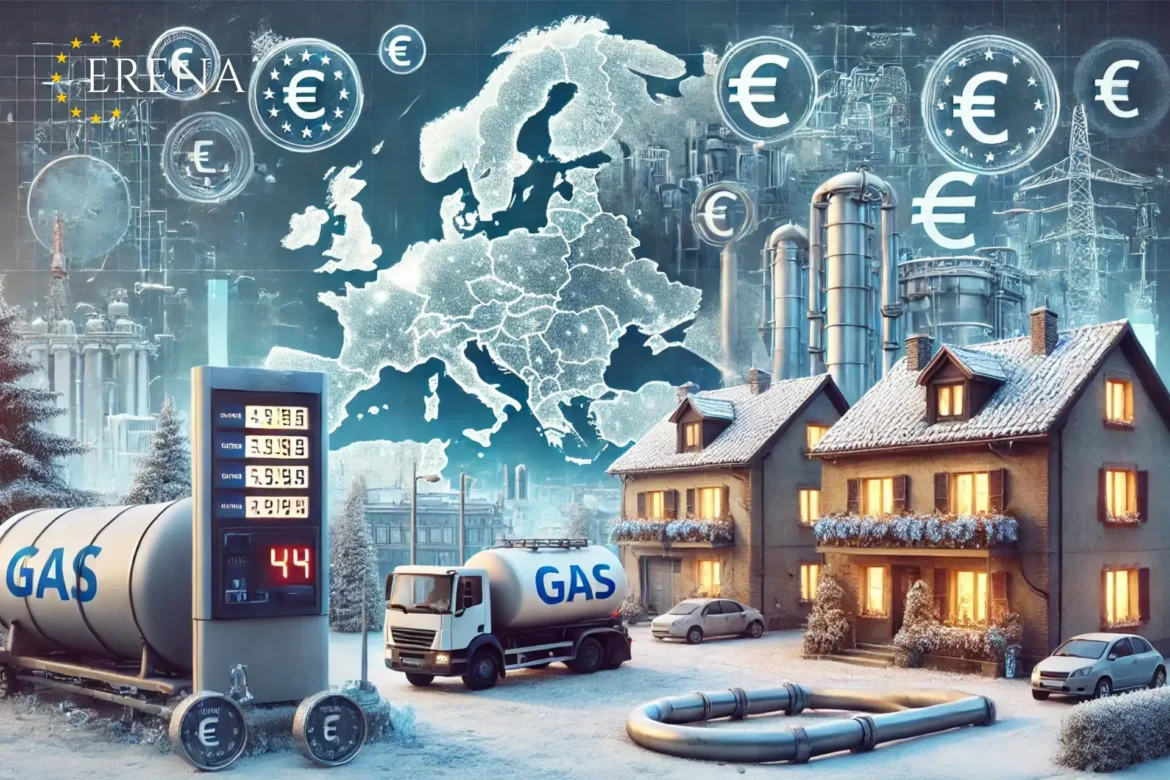Gas prices in the largest European countries in 2024 remain a hot topic in the energy sector and among the public. This is due to a number of factors, including geopolitical situations, the transition to greener energy sources, and the internal economic priorities of EU nations.
Key Factors Influencing Gas Prices
Gas prices in Europe in 2024 are shaped by numerous factors. Among the key ones are:
1. Geopolitical Situation: Conflicts and sanctions between major gas exporters and European countries continue to pressure the market.
2. Supply and Demand: Cold winters, the recovery of industrial production post-pandemic, and growing energy needs increase demand.
3. Development of Alternative Energy: The expansion of renewable energy sources (RES) and advancements in hydrogen technology are changing the energy consumption structure.
4. Infrastructure: Limited storage, transportation, and processing capacities directly impact prices.
5. Market Mechanisms: Dynamics in exchanges, spot prices, and futures contracts shape the cost of gas for end consumers.
Gas Prices in Leading European Countries
Germany
Germany, being the largest gas consumer in Europe, remains dependent on imports. In 2024, gas prices in the country remain high despite government efforts to diversify sources. The average price for households is around 12-15 euro cents per kilowatt-hour (kWh), placing a significant strain on family budgets.
Major gas supplies to Germany come from the US and Qatar in the form of LNG, as well as from Norway via pipelines. The abandonment of Russian gas required substantial investments in infrastructure, which also affected final prices.
France
France demonstrates relatively low gas prices due to its high share of nuclear energy. In 2024, the average gas price for households is 10-12 euro cents per kWh. However, dependency on imported gas persists, especially during colder months.
To stabilize prices, France is actively developing LNG infrastructure and signing long-term agreements with suppliers from Africa and the Middle East. These measures aim to minimize price volatility.
Italy
Italy, one of the most reliant on imported gas, depends heavily on supplies from Algeria, Azerbaijan, and Libya. In 2024, the average gas price for consumers is 14-16 euro cents per kWh, which is above the EU average.
The Italian government is actively promoting the use of RES and energy-efficient technologies to ease the burden on citizens and businesses. However, with limited supply, significant price reductions in the short term are unlikely.
United Kingdom
Post-Brexit, the UK faces additional challenges in regulating its energy market. The average gas price for households is 15-18 euro cents per kWh. The country’s primary gas supplies come from the US and Qatar as LNG, as well as from Norway.
The government is actively pushing initiatives to reduce dependence on fossil fuels, including subsidizing heat pumps and installing solar panels. These measures aim to lower energy costs for the population in the long run.
Spain
Spain, benefiting from access to gas from North Africa and several LNG terminals, maintains relatively stable prices. The average gas price for households is 11-13 euro cents per kWh.
The country is actively developing renewable energy, which helps reduce dependence on imports. However, high inflation and economic challenges may affect gas accessibility for consumers.
Netherlands
The Netherlands, traditionally a gas exporter, has reduced production at the Groningen field due to earthquake risks. This has led to increased dependence on imports and higher prices. In 2024, the average gas price for households is 13-15 euro cents per kWh.
The government is heavily investing in hydrogen energy and RES, which could reduce gas dependence in the long term.
Trends and Projections for Gas Prices
Experts predict that gas prices in Europe in 2024 will remain high due to persistent geopolitical risks and limited supply. However, several measures could ease market pressure:
1. Increased LNG Supplies: Expanding LNG terminals and signing long-term contracts.
2. Energy Conservation: Implementing technologies that reduce gas consumption both in industry and households.
3. Development of RES: Increasing the share of solar and wind energy, as well as transitioning to hydrogen.
4. Strategic Reserves: Coordinating actions at the international level to ensure energy security.
High prices encourage a shift to environmentally friendly energy sources but also impose a significant financial burden on the population and businesses.
Conclusion
In 2024, gas prices remain a key factor affecting the economies of European countries and the quality of life of citizens. To mitigate the consequences of high prices, a coordinated policy is needed to develop alternative energy sources, support vulnerable population groups, and ensure the resilience of energy systems. Balancing energy security and resource accessibility is becoming a priority task for European governments.
Cost of gas prices in major European countries for 2024
888
previous post

